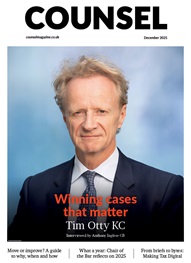*/
Sir Brian Neill, Richard Rampton QC, Heather Rogers QC,
Timothy Atkinson, Aidan Eardley
LexisNexis, 3rd edition (Aug 2009), £195.00, ISBN 978-0406178312
Since the first edition of Duncan and Neill in 1978 the libel landscape has changed dramatically and looks set to continue doing so. Juries are no longer “in the position of sheep loosed on an unfenced common, with no shepherd” as Lord Bingham famously described them. More detailed directions are now commonplace and jury awards correspondingly smaller than in their zenith in the 1980’s; to the considerable relief of the popular press.
In Reynolds v Times Newspapers [2001] AC 127 the House of Lords created a new immunity for the media where what was published was false but where the story was in the public interest and was the product of responsible journalism. Initially the media struggled to establish this defence, but in Jameel v Wall Street Journal Europe Sprl [2006] UKHL 44, Lord Hoffmann in particular gave the defence a considerable boost. It is a curious phenomenon that at a time when, in general, journalistic standards are regarded as at an all time low, the law is moving towards granting the media more immunities rather than seeking to enforce professional standards.
The authors’ approach to the Reynolds defence is not to dwell on the decision itself, but to take as their starting point the re-statement of the law in Jameel. This works extremely well. As with previous editions the authors are aiming for an “impeccable synthesis” of the law rather than the more detailed treatment given to the subject in the other leading textbook.
It is an essential textbook and its measured and concise style is likely to commend itself to judicial citation in difficult cases.
Keith Schilling, Schillings Solicitors. A longer version of this review was published in NLJ (5 March 2010).
In Reynolds v Times Newspapers [2001] AC 127 the House of Lords created a new immunity for the media where what was published was false but where the story was in the public interest and was the product of responsible journalism. Initially the media struggled to establish this defence, but in Jameel v Wall Street Journal Europe Sprl [2006] UKHL 44, Lord Hoffmann in particular gave the defence a considerable boost. It is a curious phenomenon that at a time when, in general, journalistic standards are regarded as at an all time low, the law is moving towards granting the media more immunities rather than seeking to enforce professional standards.
The authors’ approach to the Reynolds defence is not to dwell on the decision itself, but to take as their starting point the re-statement of the law in Jameel. This works extremely well. As with previous editions the authors are aiming for an “impeccable synthesis” of the law rather than the more detailed treatment given to the subject in the other leading textbook.
It is an essential textbook and its measured and concise style is likely to commend itself to judicial citation in difficult cases.
Keith Schilling, Schillings Solicitors. A longer version of this review was published in NLJ (5 March 2010).
Sir Brian Neill, Richard Rampton QC, Heather Rogers QC,
Timothy Atkinson, Aidan Eardley
LexisNexis, 3rd edition (Aug 2009), £195.00, ISBN 978-0406178312
Since the first edition of Duncan and Neill in 1978 the libel landscape has changed dramatically and looks set to continue doing so. Juries are no longer “in the position of sheep loosed on an unfenced common, with no shepherd” as Lord Bingham famously described them. More detailed directions are now commonplace and jury awards correspondingly smaller than in their zenith in the 1980’s; to the considerable relief of the popular press.


Chair of the Bar reflects on 2025
AlphaBiolabs has donated £500 to The Christie Charity through its Giving Back initiative, helping to support cancer care, treatment and research across Greater Manchester, Cheshire and further afield
Q&A with criminal barrister Nick Murphy, who moved to New Park Court Chambers on the North Eastern Circuit in search of a better work-life balance
Revolt Cycling in Holborn, London’s first sustainable fitness studio, invites barristers to join the revolution – turning pedal power into clean energy
Rachel Davenport, Co-founder and Director at AlphaBiolabs, reflects on how the company’s Giving Back ethos continues to make a difference to communities across the UK
By Marie Law, Director of Toxicology at AlphaBiolabs
Are you ready for the new way to do tax returns? David Southern KC explains the biggest change since HMRC launched self-assessment more than 30 years ago... and its impact on the Bar
Professor Dominic Regan and Seán Jones KC present their best buys for this holiday season
Marking one year since a Bar disciplinary tribunal dismissed all charges against her, Dr Charlotte Proudman discusses the experience, her formative years and next steps. Interview by Anthony Inglese CB
Little has changed since Burns v Burns . Cohabiting couples deserve better than to be left on the blasted heath with the existing witch’s brew for another four decades, argues Christopher Stirling
Pointillism, radical politics and social conscience. Review by Stephen Cragg KC